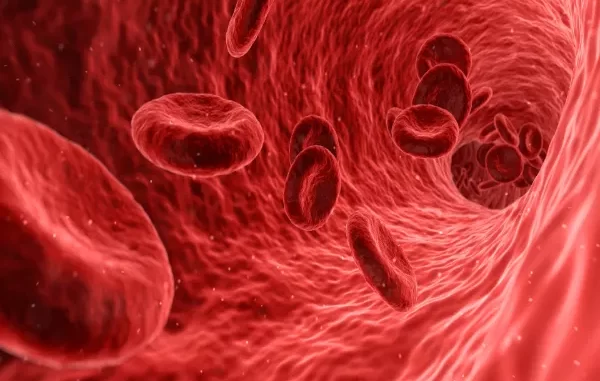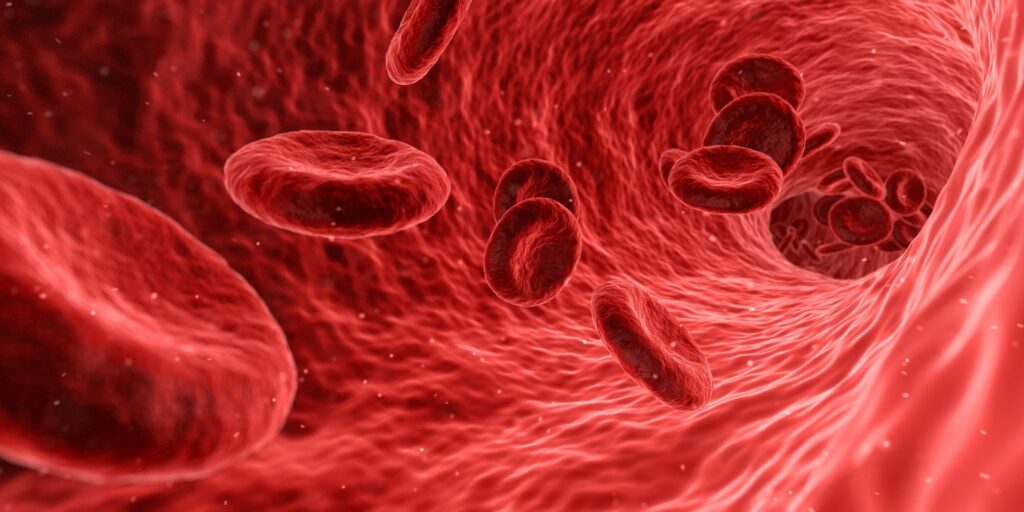
The human body is an incredible thing, and the blood that runs through it is no exception. Blood is an essential component of the human body, delivering oxygen and nutrients to cells, removing waste products, and helping to fight off infections. It also plays a major role in many of the body’s most vital functions. There are many fascinating and interesting facts about human blood that might surprise you. From its color to its composition, here are some remarkable facts about the liquid that keeps us alive. Read these interesting facts about human nails for more trivia like this.
Uncovering the Fascinating Properties of Human Blood

Humans are made up of more than 50 trillion cells, and each cell relies on the nourishment provided by blood. This vital fluid is made up of a complex mix of components, providing a variety of functions for the human body. In this article, we will explore the fascinating properties of human blood and how it plays a vital role in our health.
Blood is composed of both a liquid component, known as plasma, and solid components, including red blood cells, white blood cells, and platelets. Plasma is made up of 90% water and contains salts, proteins, glucose, hormones, and other molecules essential for life. Red blood cells, also called erythrocytes, are the most numerous component of blood, making up 40-45% of the total volume. These cells contain hemoglobin, an iron-containing protein that binds and transports oxygen to the body’s tissues. White blood cells, or leukocytes, are an essential part of the immune system, helping to fight off infection. Platelets, or thrombocytes, are involved in clotting and wound healing.
Blood performs a number of vital functions in the body, including transporting oxygen and nutrients to cells, helping to regulate body temperature, and aiding in the removal of waste products. It also plays an essential role in maintaining homeostasis, the state of equilibrium in the body, by helping to regulate pH, electrolyte balance, and fluid volume.
Blood is also a source of stem cells, which can be used in medical treatments such as bone marrow transplantation and regenerative medicine. In addition, blood can be used to diagnose medical conditions, such as anemia, diabetes, and certain types of cancer.
The fascinating properties of human blood are essential to life and health. It is a complex mixture of components that provide a variety of functions for the human body. From helping to transport oxygen and nutrients to aiding in the removal of waste products, blood is an essential part of our wellbeing.
The Unique Role of Human Blood in the Body’s Life-Giving Functions
Human blood plays a vital role in the body’s life-giving functions. It transports oxygen and nutrients to the cells, removes waste products, and helps to regulate the body’s temperature and pH balance. Blood is also involved in the body’s defense system, transporting white blood cells and antibodies to fight infection, and carrying platelets to heal wounds and control bleeding.
Blood is composed of red blood cells, white blood cells, and platelets suspended in a liquid called plasma. Red blood cells are the most plentiful type of cell in the blood, and they are responsible for transporting oxygen to the body’s cells. They also contain hemoglobin, an iron-rich protein which binds to oxygen so that it can be transported around the body. White blood cells are the body’s defenders against infection, and they also help to regulate the body’s immune system. Finally, platelets are responsible for clotting the blood and healing wounds.
The production of red blood cells is regulated by the hormone erythropoietin, which is produced in the kidneys. As its name implies, erythropoietin stimulates the production of red blood cells, which helps to maintain the body’s oxygen levels. White blood cells are produced in the bone marrow, while platelets are produced in the spleen.
In summary, human blood is essential to the body’s life-giving functions. It transports oxygen and nutrients to cells, helps to regulate the body’s temperature and pH balance, and helps to fight infection and heal wounds. Without it, the body would be unable to survive.
Exploring the Wonders of Human Blood: How It Keeps Us Alive and Healthy
The human body is an incredible machine, and its ability to keep us alive and healthy relies heavily on the complex and fascinating component that is blood. Blood is a vital liquid that is essential for life and plays a major role in keeping us healthy. In this article, we will explore the many wonders of human blood, discovering how it keeps us alive and healthy.
Blood is composed of four main components: red blood cells, white blood cells, platelets, and plasma. Red blood cells, or erythrocytes, are responsible for carrying oxygen and carbon dioxide throughout the body. They are the most abundant cell type in the blood, making up 40 to 45% of the total volume. White blood cells, or leukocytes, are a type of cell that helps to protect the body against infection and disease. They make up 1% of the total blood volume. Platelets, or thrombocytes, are cell fragments that are essential for the clotting of blood. Plasma, the liquid part of the blood, is made up of water, proteins, lipids, hormones, nutrients, and other minerals. Together, these components work together to keep us alive and healthy.
The primary function of blood is to transport oxygen and nutrients throughout the body. As red blood cells move around the body, they pick up oxygen from the lungs and deliver it to the cells in the body. Then, they collect carbon dioxide from the cells and carry it back to the lungs, where it is exhaled. This process is known as circulation, and it is essential for keeping cells supplied with the oxygen and nutrients they need to survive.
Blood also plays a crucial role in fighting infection and disease. White blood cells protect the body against harmful substances such as bacteria and viruses. They help to identify and destroy these foreign invaders before they can cause harm. Platelets are also important for maintaining health as they help to form blood clots, which seal off injured vessels and prevent excessive bleeding.
Finally, the plasma in blood plays an important role in helping to regulate body temperature, pH, and fluid balance. It also contains important hormones and proteins that help to maintain the body’s normal functioning.
In conclusion, human blood is an incredibly complex and fascinating component of the human body. It is essential for life and for keeping us healthy. Blood transports oxygen and nutrients throughout the body, helps to fight infection and disease, and helps to regulate the body’s temperature, pH, and fluid balance. Without it, the body could not survive.
Leave a Reply